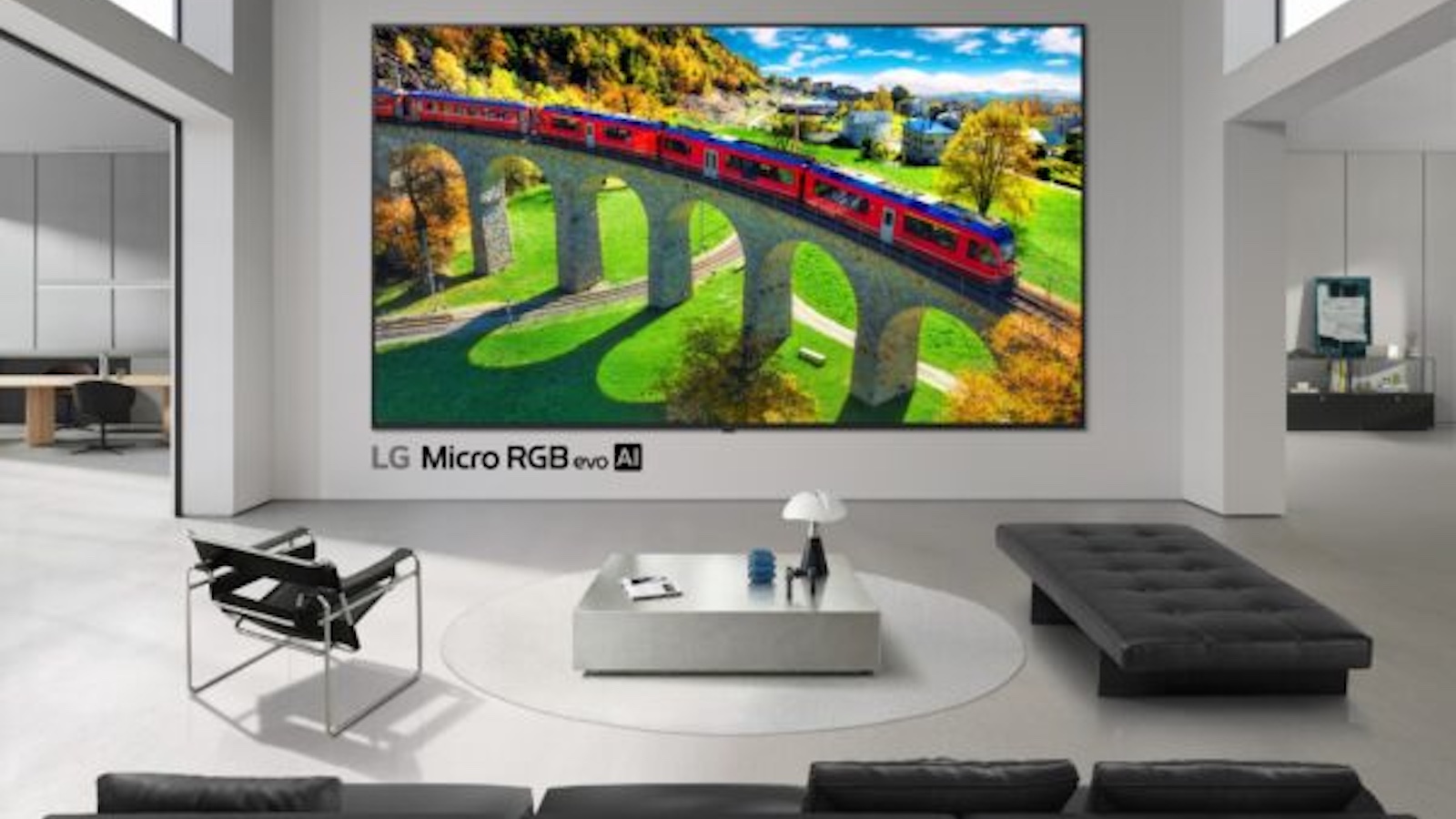What Hi-Fi? Verdict
An excellent picture performance, strong sound, Ambilight and an aggressive price combine to make the OLED805 one of the best TVs you can buy
Pros
- +
Crisp and detailed picture
- +
Strong sound
- +
Ambilight
Cons
- -
Highlights could be brighter
- -
Not the best choice for gamers
Why you can trust What Hi-Fi?
Over the last few years, Philips has developed an awkward habit of rushing its first TV of the year out before it’s truly ready, so it can hit the deadline for our Awards submission. The result is a number of four-star performances that later prove to be below the actual capabilities of the finished set.
The company has avoided making the same mistake this year; supplying a new OLED TV in plenty of time for Awards consideration and without any signs of it being rushed or unfinished.
The 55OLED805 is a Philips OLED as it should be; genuinely excellent. If you’re prepared to forego the odd next-gen feature, it may even be the best performance-per-pound OLED you can currently buy.
Pricing
The Philips 55OLED805 price at launch is £1499. That instantly makes it look like good value: LG’s equivalent, the OLED55CX, is £1699 at the time of writing, while Sony’s KD-55A8 is £1799.
We’re reviewing the OLED805 in its 55in guise, but there is also a 65in version if you’d like to go bigger. Philips hasn’t yet announced plans for a 48in OLED. The company doesn’t currently sell any OLED TVs in the US or Australia.
Build
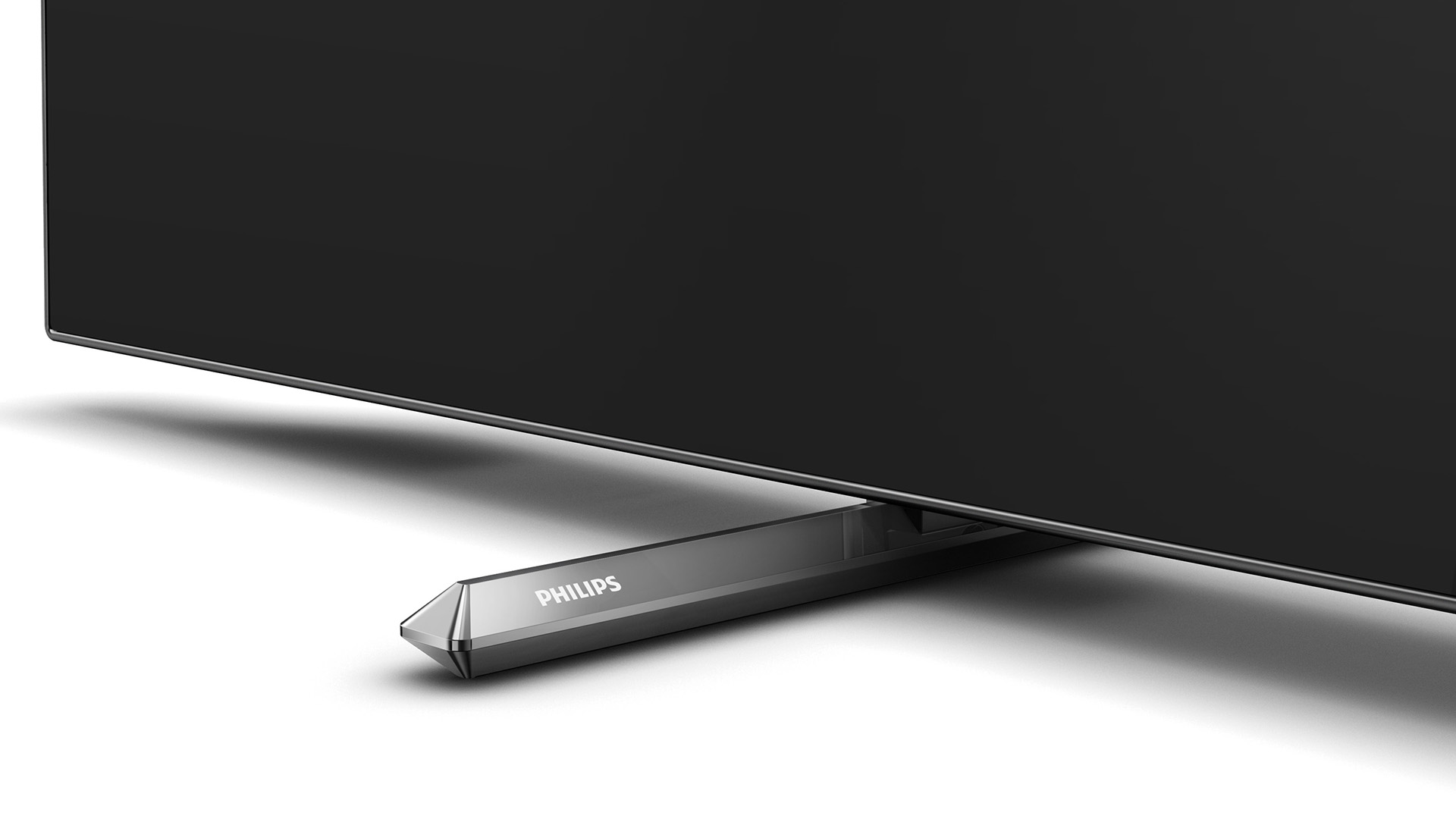
Dainty feet notwithstanding, the OLED805 looks much like any other 2020 OLED: a pure black screen surrounded by equally black, flush bezels and a thin metal frame around the edges. Its IR receiver and corresponding light is positioned on the bottom-right rather than the bottom of the set, but otherwise, you’d be hard-pressed to pick the Philips out of a line-up that included the LG CX and Sony A8.
Each of these sets has a plastic enclosure bolted to the rear of its super-slim OLED panel, but Philips’ Ambilight tech, combined with a surprisingly large rear-firing subwoofer, make this enclosure both wider and deeper than that of most rivals.
The latest hi-fi, home cinema and tech news, reviews, buying advice and deals, direct to your inbox.
At its thickest point, the OLED805 is 5.8cm, whereas the Sony A8 is 5.2cm and the LG CX is just 4.7cm. Philips also recommends leaving a gap of 10-20cm between the rear of the TV and the wall behind, for the best Ambilight effect, so you probably won’t want to mount it flush to the wall, as you might one of its rivals.
Those placing the TV on a piece of furniture will be pleased to hear that this year adapters are included in the box that can raise the height of the TV in order to better accommodate a soundbar. The feet otherwise keep the display close to the surface upon which it’s placed. It’s also worth noting that the TV’s 80cm-wide footprint means it can be placed on a narrower piece of furniture than either the LG CX or Sony A8.
The remote is as stylish as the set itself, thanks to an elegant shape and a pleasant leather wrap across the back and up the sides. Some will mourn the lack of the QWERTY keyboard that Philips integrates into many of its premium zappers, but this is often more trouble than it’s worth. The remote’s standard, TV-specific buttons are nicely clicky, but they’re also rather cluttered and largely indistinguishable from one another by touch. There is a backlight, though, so you can find the one you want even when viewing in the dark.
Features
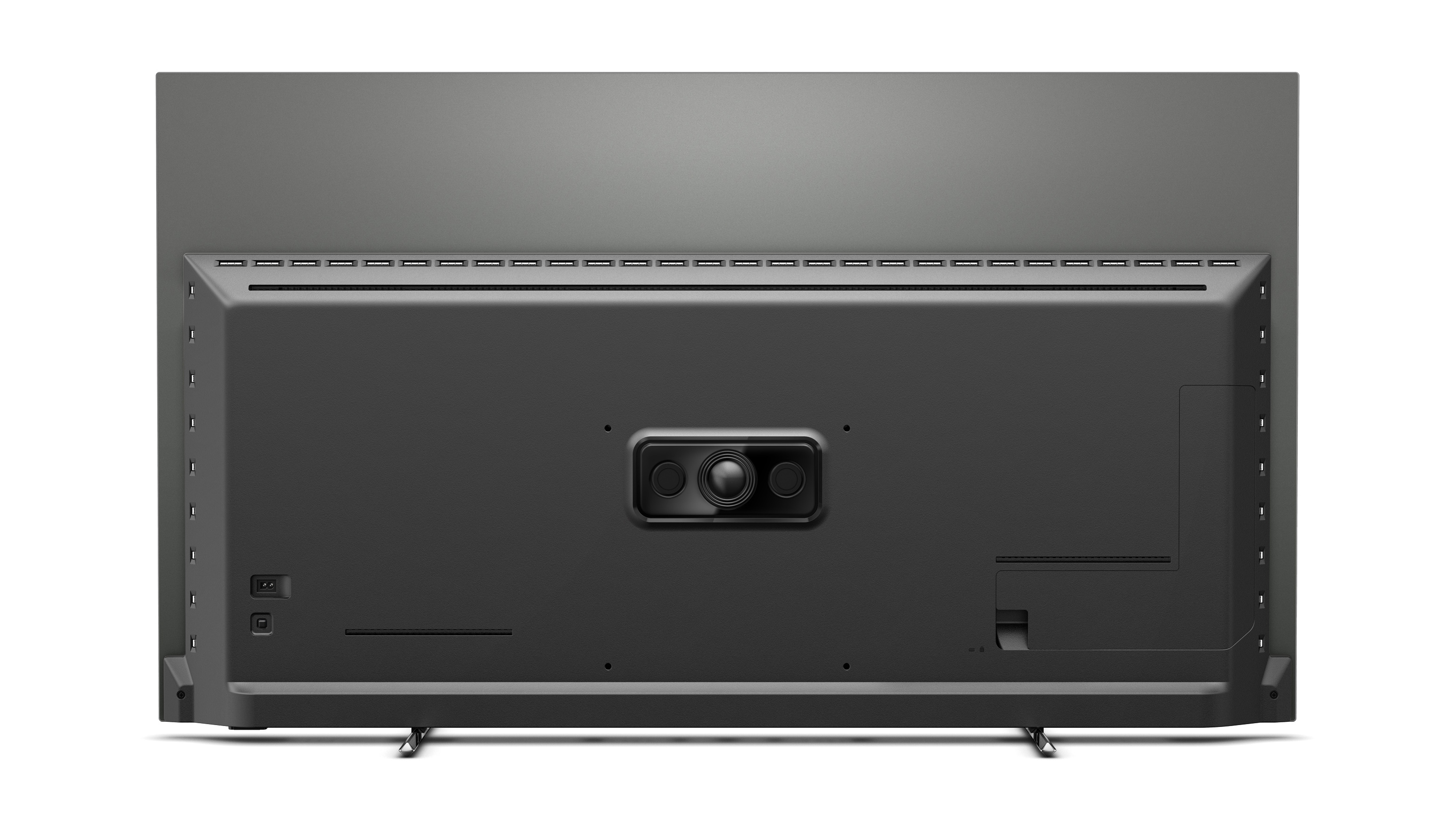
The OLED805 brings with it the fourth generation version of Philips’s P5 processor. The big new addition here is AI technology that uses neural networks and machine learning to analyse millions of video clips from a bespoke database in order to tailor picture quality to be as natural as possible. The set has a dedicated AI picture preset, but the AI feature is actually active on almost every one of the TV’s picture modes.
As was the case last year, Philips is supporting both Dolby Vision and HDR10+ (as well as standard HDR10 and HLG) on its 2020 OLEDs and, while the benefits of HDR10+ are still rather dubious, it’s reassuring to have both bases covered.
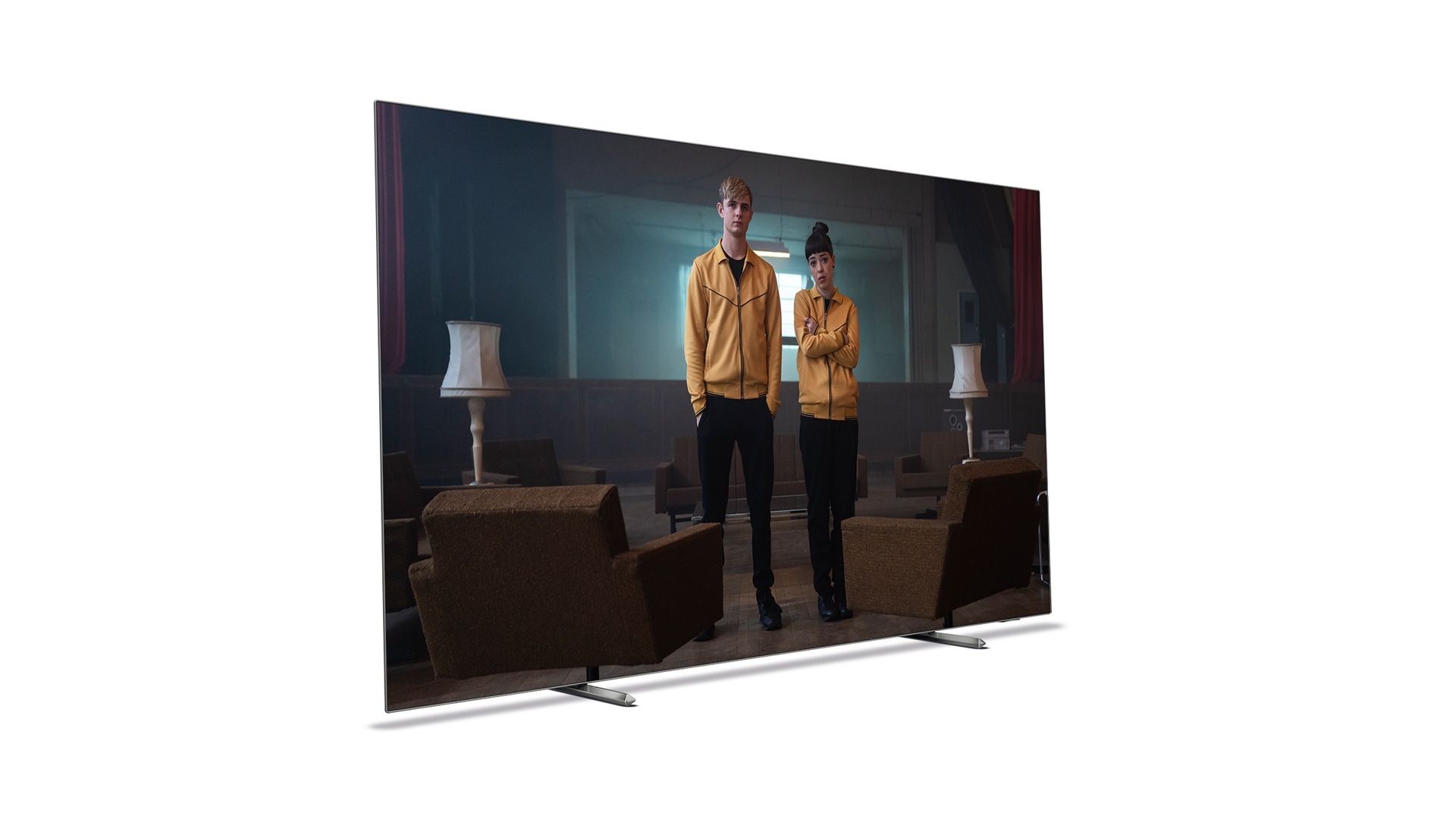
Screen type OLED
Resolution 4K
Operating system Android 9
HDR formats HDR10, HLG, Dolby Vision, HDR10+
HDMI 4
USB 3
Optical 1
The OLED805 is also the first Philips to support Filmmaker Mode, although it doesn’t appear as a named preset in the TV’s menus. To activate it, you simply select the Movie mode. Though why you’d want to is beyond us: the UHD Alliance might claim that it delivers the picture exactly as intended, but it’s hard to believe that the bland, lifeless image produced by the preset (and the Filmmaker Mode on LG’s 2020 models, for that matter) is what any director had in mind when sitting in the editing suite.
While selecting modes and changing settings involves interacting with Philips’s own menu system, the core user experience is provided by Google, in the form of Android TV 9. The fact that there are essentially two operating systems working concurrently makes for a less unified experience than you get from a Samsung or LG TV (the Home screen feels more like a source than the true core of the user interface) but Android TV is getting better with each new version and is better laden with apps than ever before.
BBC iPlayer, ITV Hub, All 4 and My5 are now officially part of the package, Netflix is on board, too, complete with Dolby Vision and Dolby Atmos where appropriate, and Amazon Prime Video’s library is similarly stocked with HDR10+ content. Disney+ is also present but, while Dolby Vision content plays accordingly, Dolby Atmos is currently missing from titles that should have it – this is presumably an Android TV issue, as it’s one that the Sony A8 also suffers.
The Apple TV app is missing from Android TV entirely, which is disappointing but of little surprise. While neither is as good, you can at least get your pay-as-you-go movie streaming fix from Google Play Movies & TV or Rakuten, both of which support HDR10 via the Philips.
Also missing are Now TV and BT Sport, which is a shame but not the end of the world. On the music front, you get Spotify, Tidal and Deezer, but we wouldn’t recommend using your TV as a music source.
If you’d rather watch content from an external source, the Philips has a fairly typical array of connections that includes four HDMIs, two USBs, a headphone socket and optical audio output. It’s a shame the HDMIs aren’t better spec’d, though: ALLM (Auto Low Latency Mode) is supported, but the likes of eARC (Enhanced Audio Return Channel), VRR (Variable Refresh Rate) and HFR (High Frame Rate) are not.
The lack of VRR will be of concern to gamers, particularly those considering an upgrade to PS5 or Xbox Series X. The OLED805’s input lag of 33ms, while perfectly fast enough for most people, is a fair bit slower than the best in class, suggesting that enticing gamers isn’t a high priority for Philips.
It’s worth reiterating that whatever you watch (or play) on the Philips is extended on to the wall around the TV in the form of coloured light. It’s been around a long time, but Ambilight is still wonderful. Not only does it create a real spectacle (particularly if you synchronise it with Hue lights), it serves to enhance perceived contrast, make the screen seem bigger and draw you into the action. Ambilight might not be reason alone to buy a Philips over a rival, but if we were torn between two evenly matched sets, we’d choose the one with Ambilight.
Picture

The exciting news is that the Philips is an excellent choice in terms of pure picture performance.
Kicking off with The Witcher from Netflix, we note that the set defaults to the HDR Personal preset rather than the expected Dolby Vision Bright setting. The resulting picture is vivid and vibrant, but a touch over the top for our tastes and rather antithetical to Dolby Vision’s goal of delivering the content in the most authentic manner possible.
We manually switch to Dolby Vision Bright and the image is more in line with what we’d expect from the content in terms of brightness and colours, but still trumps the LG CX for punch and sharpness.
As Geralt is given a tour of Stregobor’s gaudy courtyard, the individual leaves of a tree are more clearly rendered, the fantastical glow of the scene is rich but controlled, and there’s a general crispness and solidity to the reproduction that makes the excellent LG look just a bit flat by comparison.
Switching to the 4K Blu-ray of 1917, also in Dolby Vision, the Philips proves that it’s just as capable with more subtle source material. There’s a fine line between delivering the film’s muted palette and draining the life out of the picture, and it’s one that the Philips treads with confidence.
From the green fields of the ravaged French countryside to the grey rubble remains of the town of Écoust-Saint-Mein and the tired, flushed faces of the film’s protagonists, everything is delivered with the requisite nuance.
1917 is just about the most challenging film out there when it comes to motion processing, and it causes problems for the Philips’s default Standard motion setting. It’s worth pointing out that this setting is capable of some amazing feats, and for much of our time with the OLED805 we’re delighted by the smoothness and sharpness of its motion, particularly where consistent, steady pans are concerned, such as the one across the river towards the town.
Standard does struggle somewhat with less predictable and more complex movements, though. As the camera spins around the soldiers as they watch the distant planes, for example, there’s quite a lot of shimmer around the rims of their helmets. And, at the start of Guardians Of The Galaxy Vol.2, the arms extended through the roof of the speeding Ford Mustang flash in and out of existence as the set struggles to discern them from the fields beyond.
Some will accept these occasional flaws as a fair trade for what is otherwise excellent processing. For others, those flaws will be too distracting and, if so, the new Pure Cinema motion setting could be for you. This results in slightly smoother and sharper motion than is produced by simply turning the processing off entirely (the only option on last year’s sets) with none of the shimmer you get from the more aggressive processing options. It's still not perfect, though, and the long and the short of it is that some rivals, particularly Sony and Panasonic, still offer better overall motion processing.
On the subject of aggressive processing, Philips still insists that its Vivid modes are best for watching non-metadata-driven (i.e Dolby Vision) content. Whether you start with Vivid and pare things back, or take a more subtle preset and bump it up a bit, the results are the same. Nevertheless, when we fire up the HDR10 Blu-ray of Blade Runner 2049 we give the HDR Vivid setting a whirl. Sure enough, it’s overblown, but perhaps not to the extent that you might imagine.
To get HDR Vivid to a place where we’re happy with it, we reduce Colour and Sharpness, increase Brightness, switch off the Light Sensor and Noise Reduction, and switch Motion Styles to Pure Cinema.
The resulting picture is stunningly sharp, detailed and three-dimensional, and brilliantly balanced in terms of colours and contrast. It skews a little darker than the LG CX, but its picture is beautifully deep and dramatic and there’s no loss in terms of dark detail.
The only slight flaw in the delivery is that the Philips appears to hold back somewhat when confronted by high contrast images that involve an overwhelmingly black screen with a small amount of bright light, such as the scene-setting text at the start of Blade Runner 2049.
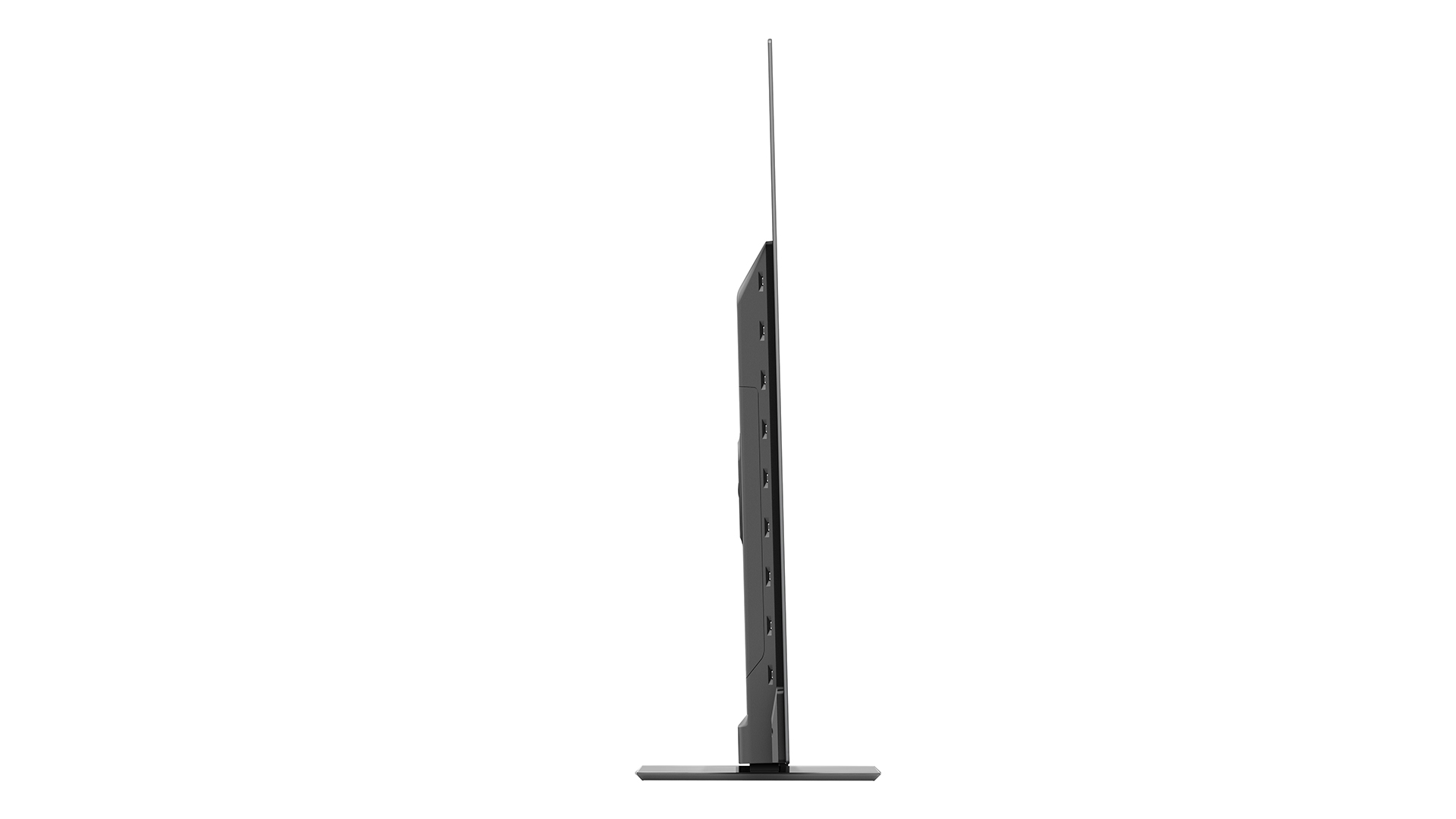
The Philips has a clear advantage over most rivals when it comes to definition and detail resolution, though. The image is crisp and solid to a degree that makes these other sets look a little flat by comparison. What’s most impressive is that this detail and definition doesn’t look forced or artificially enhanced – the set’s crispness doesn’t come at the expense of naturalism.
Dropping down to the True Grit Blu-ray, the Vivid mode is horribly overblown. It’s essentially trying to make the Full HD SDR disc look like 4K HDR, but it's instead producing an unnaturally garish and noisy image with blown-out white highlights.
We make big reductions to the Colour, OLED Contrast, Sharpness and Brightness settings, and turn off Perfect Natural Reality, Perfect Contrast and Ultra Resolution. You may well find that using one of the other presets as your starting point results in fewer adjustments being necessary.
But make the right adjustments and the endpoint is a lovely picture. Sharpness and detail remain two of the set's greatest strengths, but its colour balance is also delightfully well-judged. We suspect that the tone is just a little richer than is truly neutral, but the resulting picture is so pleasant that we could hardly call that a flaw.
With these settings, the Philips is also brighter and punchier than the CX (despite having been a little darker with HDR content) while still maintaining the beautifully inky blacks for which OLED is so well regarded.
Switching to standard-def via the built-in tuner, we discover a picture that combines plenty of punch with a good degree of control to colours. There’s a touch more noise around edges than the very best sets exhibit, but the Philips puts in a strong performance with this weakest of signals.
Sound
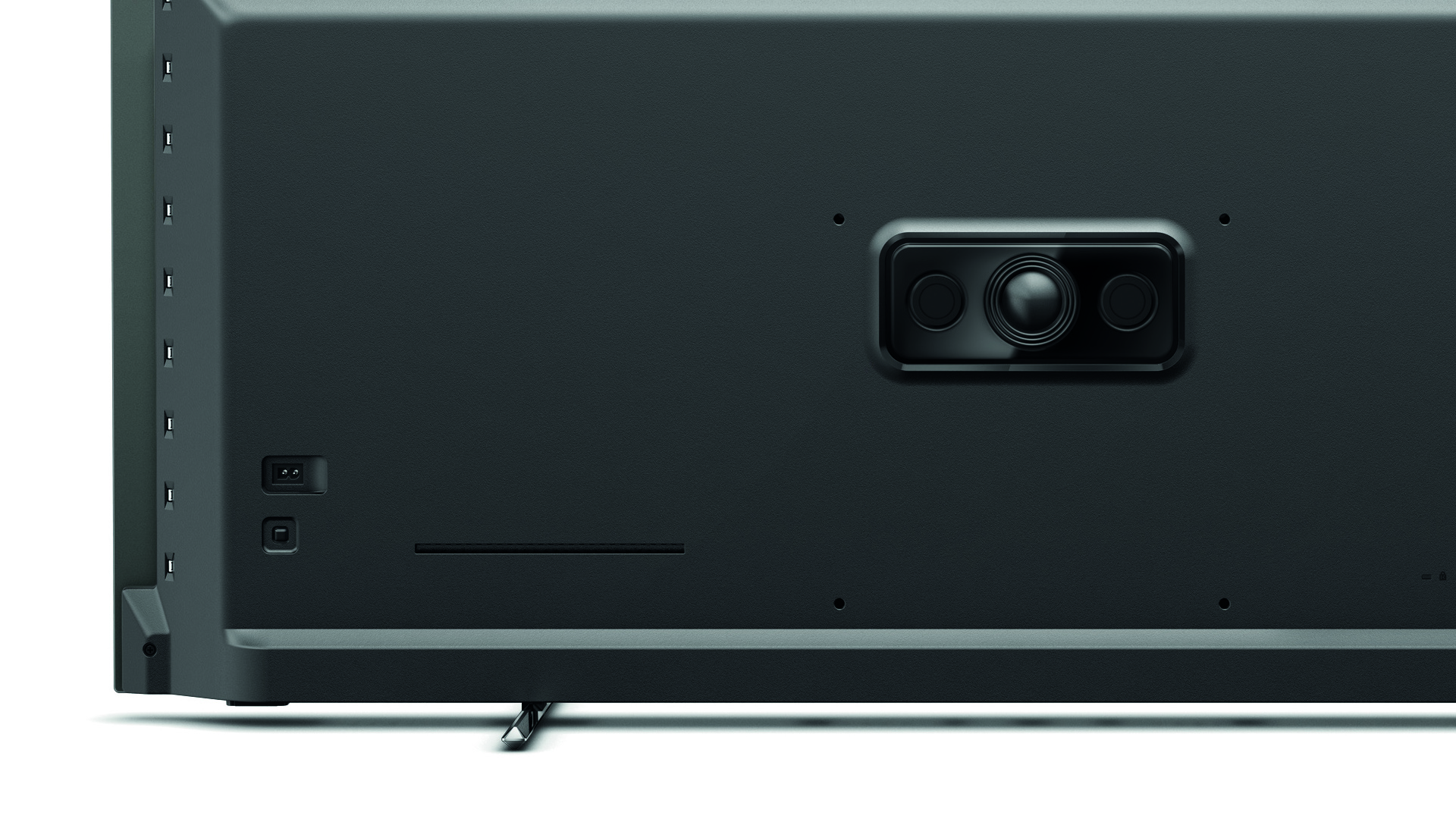
Last year’s OLED804 was highly regarded in terms of sound, but that hasn’t put Philips off making adjustments for this 2020 model. The midrange drivers and tweeters positioned on the bottom of the set are of new designs and are housed in a larger enclosure, and while the rear-firing woofer looks the same, it features two extra passive radiators for improved bass response.
While you wouldn’t need to spend much on a soundbar to get even better sound, by TV standards, the Philips sounds very good. Playing the second chapter of the Blade Runner 2049 4K Blu-ray, the OLED805 delivers actual bass frequencies while the LG CX’s woofer flaps uncomfortably.
There’s greater dynamics and punch to the Philips’s sound, and a crispness and clarity that ensures you miss little. The Sony A8’s actuator arrangement ensures that audio and video are better spatially linked, but the OLED805 sounds better than most.
Verdict
With the OLED805, Philips has put itself in the running for a top prize in our 2020 Awards. It produces stunningly crisp and detailed pictures from all sources, delivers far more accomplished audio than most rivals, adds awesome Ambilight to the mix, and has a lower price tag than its LG, Sony, Panasonic and Samsung equivalents.
Gamers may be put off by its lack of next-gen HDMI features, but for everyone else, the 55OLED805 represents an excellent purchase.
SCORES
- Picture 5
- Sound 5
- Features 4
MORE:
Read our LG OLED55CX review
Read our Sony KD-55A8 review
Read our Philips 55OLED804 review
What Hi-Fi?, founded in 1976, is the world's leading independent guide to buying and owning hi-fi and home entertainment products. Our comprehensive tests help you buy the very best for your money, with our advice sections giving you step-by-step information on how to get even more from your music and movies. Everything is tested by our dedicated team of in-house reviewers in our custom-built test rooms in London, Reading and Bath. Our coveted five-star rating and Awards are recognised all over the world as the ultimate seal of approval, so you can buy with absolute confidence.

